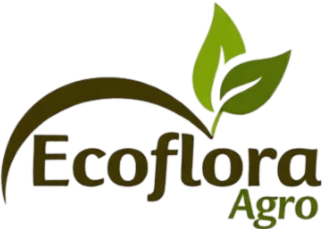The growing concern over chemical residues in food has sparked global demand for cleaner, safer agricultural practices. Excessive use of synthetic pesticides not only poses health risks to consumers but also affects soil health, water systems, and biodiversity. One of the most promising alternatives to this chemical dependency is the adoption of botanical solutions—natural crop protection agents derived from plants.
This article explores how botanical solutions are actively reducing chemical residues in crops, their advantages over synthetic inputs, their mechanisms of action, and the role of companies and farmers in promoting residue-free farming.
The Problem with Chemical Residues
Synthetic pesticides, although effective against pests and diseases, often leave behind chemical traces in fruits, vegetables, and grains. These residues can:
- Accumulate in the human body over time, causing health issues.
- Harm beneficial insects, birds, and aquatic life.
- Contaminate water sources and disrupt ecosystems.
- Lead to pesticide resistance in target pest populations.
Governmental and international agencies have defined Maximum Residue Limits (MRLs), but frequent violations continue to be reported, especially in developing agricultural economies. There’s an urgent need to shift toward residue-free farming systems.
What Are Botanical Solutions?
Botanical solutions are crop protection products derived from naturally occurring plant extracts. They include biopesticides, fungicides, insect repellents, and growth enhancers made from species like neem, pyrethrum, citronella, garlic, ginger, and chilli.
Why They Matter:
- They degrade quickly and do not persist as harmful residues.
- They have multi-target modes of action, reducing pest resistance.
- They support organic and regenerative farming goals.
How Botanical Solutions Help Eliminate Residues
1. Rapid Degradation
Most botanical compounds degrade within hours or days under sunlight and microbial activity, unlike synthetic pesticides which can persist for weeks.
2. Target-Specific Action
Botanical pesticides often target specific pests or inhibit specific functions (like feeding or reproduction), reducing the need for broad-spectrum spraying.
3. Integrated Pest Management (IPM)
They fit seamlessly into IPM strategies, which combine multiple tools to keep pest populations under control without over-reliance on chemicals.
4. Compatibility with Organic Standards
Botanical products are approved for use in organic farming systems, making them ideal for producing residue-free, high-quality food.
Popular Botanical Alternatives to Harmful Chemicals
| Synthetic Chemical | Botanical Alternative | Main Function | Residue Risk |
|---|---|---|---|
| Chlorpyrifos | Neem oil | Insect control | Low |
| Mancozeb | Garlic + turmeric extract | Fungicidal action | Minimal |
| Carbaryl | Pyrethrum extract | Broad insecticide | Rapid breakdown |
| Glyphosate (herbicide) | Clove or citronella oil | Weed suppression | Negligible |
| Imidacloprid | Chilli-garlic-ginger blend | Sucking pest repellent | Very low |
Case Study: Ecoflora Agro’s Role in Residue-Free Farming
Ecoflora Agro, a leader in botanical crop protection, is helping farmers transition away from synthetic pesticides. Through its research, product innovation, and farmer training programs, the company has helped reduce chemical residues in over 20,000 acres of farmland across Southeast Asia.
Ecoflora’s Key Practices:
- Formulating multi-plant biopesticides with proven efficacy.
- Conducting residue analysis to ensure clean harvests.
- Offering education on proper application timing to avoid contamination.
Broader Benefits of Botanical Solutions
| Impact Area | Benefit Provided |
|---|---|
| Consumer Health | Reduced risk of exposure to carcinogens and hormone disruptors |
| Soil Health | Preservation of microbial biodiversity essential for soil fertility |
| Water Systems | Prevention of runoff pollution and eutrophication |
| Pollinators | Safer environments for bees and beneficial insects |
| Farmer Safety | Lower health risks from pesticide application |
| Export Compliance | Easier adherence to international residue and organic standards |
Challenges and Solutions
While botanical solutions are effective, adoption still faces a few hurdles:
| Challenge | Solution Proposed |
|---|---|
| Shorter shelf-life | Improved encapsulation and formulation technologies |
| Limited farmer awareness | Field-level training and demonstration plots |
| Perceived lower efficacy | Combined use with IPM and precision application techniques |
| Regulatory clarity | More defined government standards and organic certification policies |
Overview Table: Why Botanical Solutions Are the Future
| Aspect | Botanical Solutions |
|---|---|
| Source | Natural plant extracts (neem, garlic, pyrethrum) |
| Residue Risk | Extremely low to none |
| Environment Impact | Eco-friendly, non-toxic, biodegradable |
| Health Impact | No long-term accumulation or carcinogenic effects |
| Adoption | Rapidly growing among organic and small-scale farms |
| Market Trend | Increasing consumer demand for residue-free produce |
Three One-Line FAQs
Q: Can botanical pesticides really replace chemicals in farming?
Yes, especially when used in integrated pest management systems.
Q: Are residue levels tested with botanical solutions?
Yes, but residue risks are minimal due to rapid degradation.
Q: Do botanical solutions harm pollinators like bees?
No, they are safer for beneficial insects and biodiversity.
